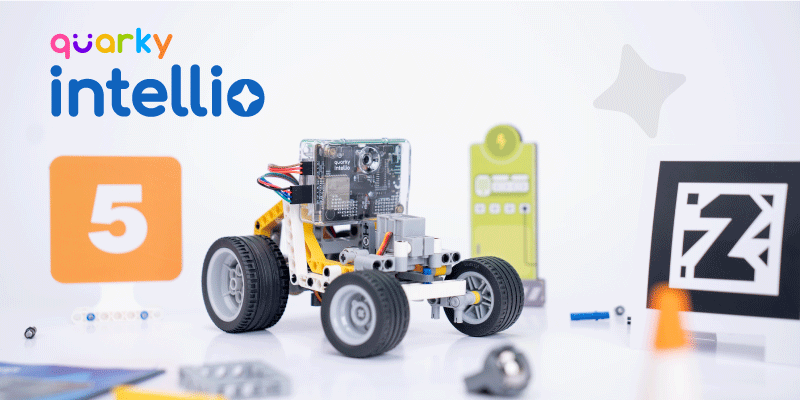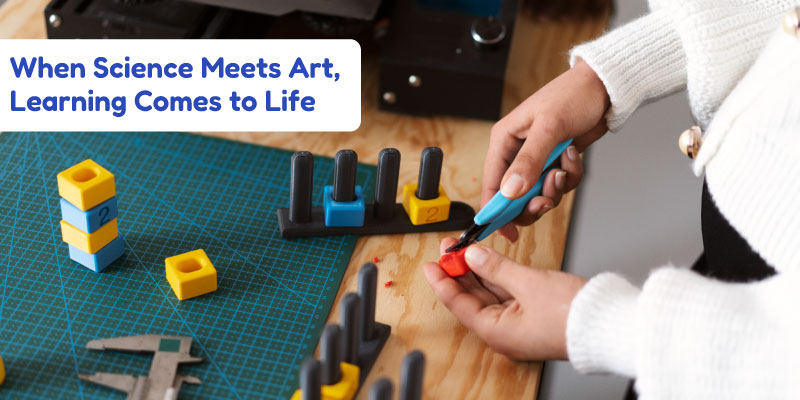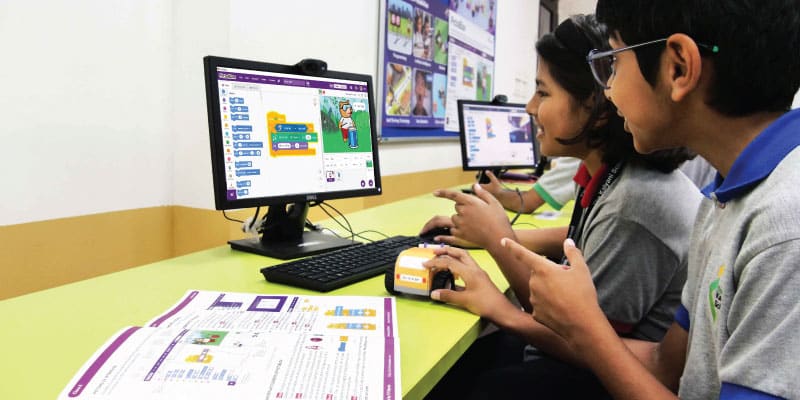The highest education is that which does not merely give us information but makes our life in harmony with all existence.
– Rabindranath Tagore
STEM education is no more a buzzword in the education community that is a concrete and absolutely necessary reality. With every passing year, the conventional methods of teaching and learning keep losing credibility while STEM education keeps getting better at it. Gone are the days when educators used to categorize students as kinesthetic (doers), auditory (listeners) or visual (seeing and learning) learners. This construct of classification was brought about by the conventional methodology and is no longer valid.
Related: STEM – The What, The Why, and The How
Why STEM is the Ladder to a Better Future

STEM education not only stimulates all the learners better, but it also makes individual development a better thought out process. A simple way to say this is to understand the very basic of experiential learning. A student when posed with a real-world problem, like building a robot, faces not only the challenges of building it but also many other things that come with it. These include making a robot with the least amount of money involved, with minimum errors and a lot more strategic problems. Every time a student overcomes these problems, trust us, the world becomes a better place.
To understand how the world is advancing with STEM at the forefront of the change, we need to see what are the factors responsible for doing so. In a few simplified words, STEM is responsible for making students who are better at facing problems, accountable to errors (and mistakes) and are ready to take calculated risks all the while maintaining creativity. These are not some of the obvious benefits of STEM and hence need to be looked at. As it turns out, these subtle qualities endowed in STEM learning are the roots of making better humans overall. It is the people that change the world and it keeps getting better as we approach education in a holistic manner.
-
Patience
It is evident that STEM Education is a problem-solving centric teaching and learning approach. And as professionals, no day goes by where we do not face problems that need to be solved. However, a trait every problem solver must inculcate, irrespective of their areas of expertise, is patience. This is where the need for practice and rigor in education comes in. STEM learning enables this by letting students solve as many problems as they possibly can. Mind you, that these problems are NOT the same as the ones we see in practice books. These are more fleshed out and have a better interaction with the real world.
-
Accountability
With the advent of widespread freedom of speech and its realization, we started drifting away from the idea of accountability. Accountability is the essence of being responsible for your behavior. One thing that comes up repeatedly in STEM fields is the necessity to be able to debug and resolve repeating errors. Mistakes and errors are a part of the learning curve, but STEM learning ensures that the student sticks to the error resolution portion without fail. Not resolving errors leads to the problem at hand (or project, for that matter) not being completed.
-
Creativity
Apart from solving problems, an important aspect is to be able to craft the right problem one wants to solve. STEM learning with Project-based learning enables the student to craft the problem they wish to solve in their own unique way. Everyone comes up with their own unique solution and every solution caters to the needs of every unique problem. This enables every community to create the right amount of problem solvers to come up for its own set of complications. Empowering problem solvers via the freedom of critical thought and creativity makes STEM education stand out in all pedagogical techniques out there.
Related: Where Will STEM Education Be in the near Future?
An Example
Let us see how with all these aforementioned attributes a better world can be realized. The internet is filled with examples of how STEM learning has made the world a better place. One such example is of the entrepreneurs Jean-Ronel Noel and Alex Georges. Hailing from Haiti, these minds decided to bring the power of renewable energy to their community. The problem was crafted and the accountable community was decided. The entrepreneurs came along with the project and had several resources at hand. Being a STEM project, they went out for the open course materials available at MIT OCW. They faced many challenges but the problem-solving rigor never went on a low. This very example shows us how the entirety of STEM learning with project-based learning is paramount of pedagogy. Not only it enables people to learn on their own, but also to bring out solutions for their own niche problems.
In a Nutshell
STEM learning is indeed the future of education. The sooner we embrace it, the sooner we help the coming generations realize the dream of a better, more responsible tomorrow. STEM enables our students to become better patient problem solvers, accountable individuals, creative minds, and also enables communities to grow on their own by empowering them.









